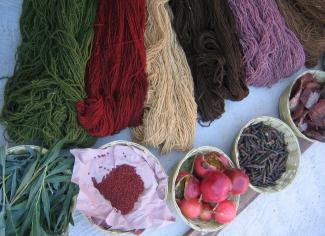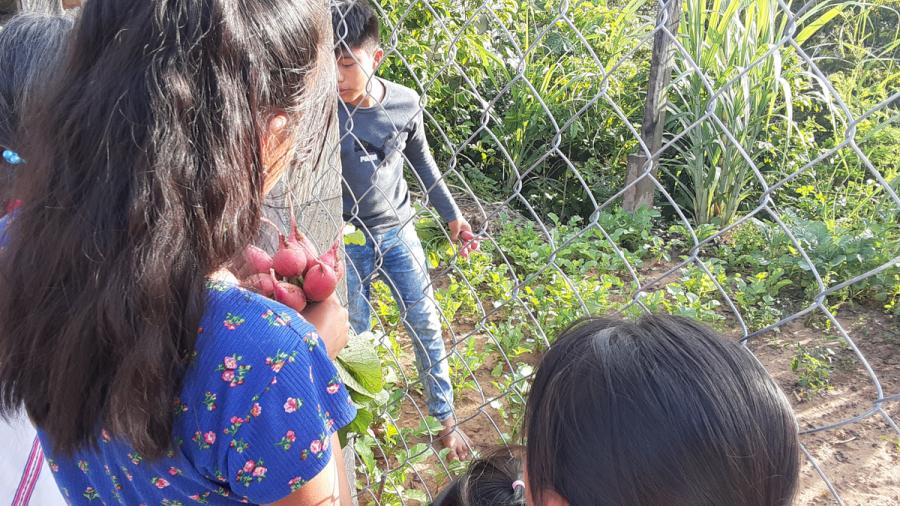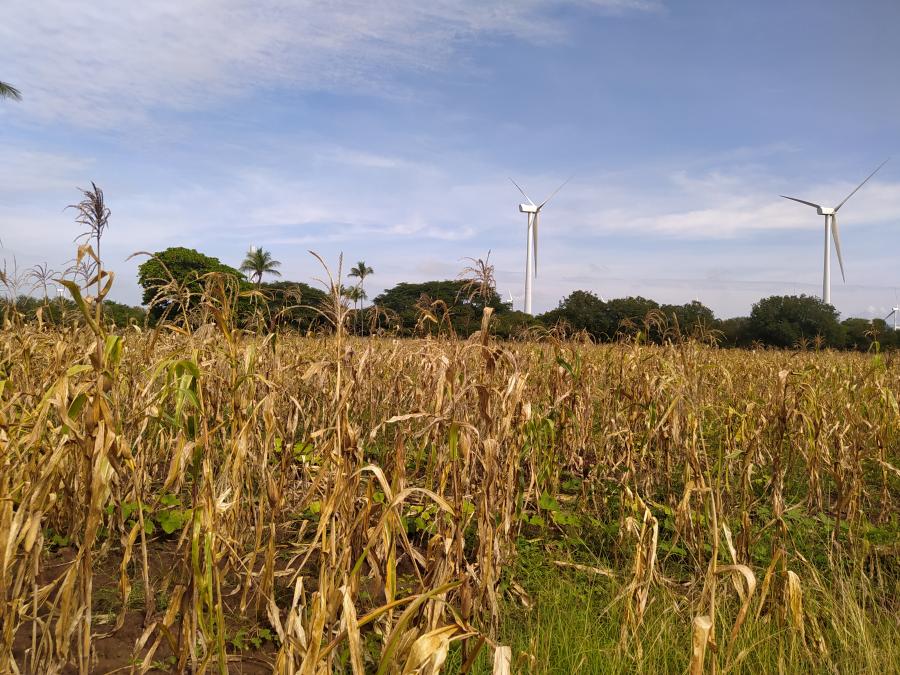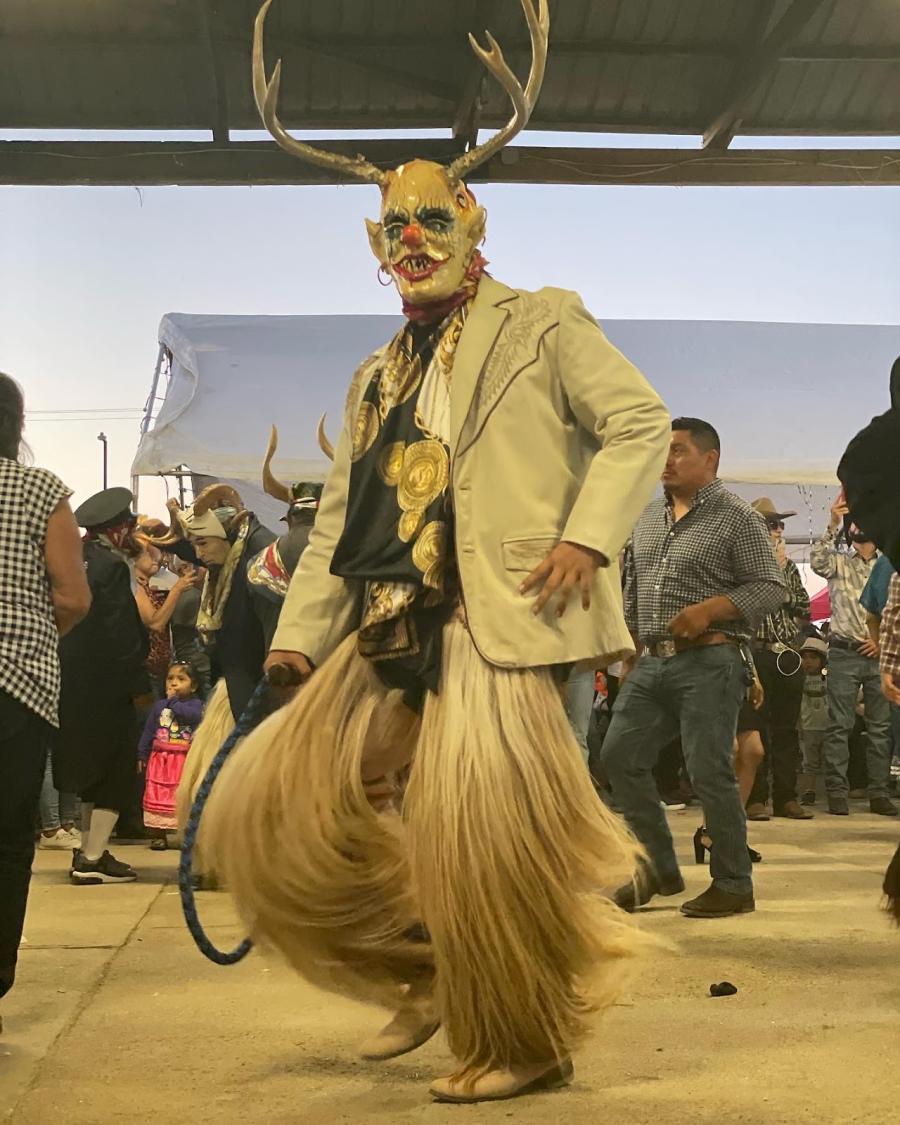
Porfirio Gutierrez comes from a long tradition of Zapotec rug weavers. Born and raised in Teotitlan Del Valle, Oaxaca, Mexico, Gutierrez learned the art of weaving and dyeing wool using plants, minerals, and insects under the tutelage of his father. He has since perfected this traditional skill and become a vocal advocate for his people’s culture and art.
“We are one of only eight families, amongst hundreds in Teotitlan, that uses organic methods of dyeing wool. We are not only keeping traditional ways of making rugs alive but we are trying to protect the environment from harmful synthetic dyes that pollute our waterways. When dyed wool and rugs are washed in Teotitlan’s local creek, the entire ecosystem suffers,” Gutierrez commented at the Cultural Survival Bazaar in Tiverton, RI this past July.
The commitment to using natural dyes and more sustainable practices inevitably leads to a history lesson in Zapotec weaving traditions. For centuries, Zapotec weavers found the sources for their dyes in plants, insects, and minerals native to Oaxaca. Using abundant resources like nuts, tree bark, cochineal insects, and indigo, Zapotecs developed a sustainable palette of colors for their woven designs. “I hope my entire village will resort to using the region’s vast supply of natural plants, minerals, and insects, just as our ancestors did originally. This is for the long-term benefit of our community,” Gutierrez says.
With an eye to the future and roots firmly in the past, Gutierrez blends Zapotec-inspired patterns with his eco-conscious sensibility, producing striking rugs, tapestries, and pillows. Working side by side with his father and siblings to complete each new piece, a rug measuring 3x5 feet can take several weeks to produce on a traditional loom. The range of styles he achieves in his work brings new meaning to the idea of organic design: both his materials and his methods have evolved to blend effortlessly with contemporary style. “I am inspired by symbolic elements that represent earthly concepts—life, nature, and eternity,” Gutierrez explains. Gutierrez investigates and studies ancient symbols from Zapotec culture; weaving has always involved an element of storytelling. “I value the importance of reinterpreting and rediscovering traditional symbols and motifs in my work,” he says.
“I recently saw a circle motif on a plate unearthed in an archaeological dig and this motif made its way into a new weaving. It tells the story of connection, respect, and longevity and represents the key to understanding my past and my commitment to the future of weaving in Teotitlan.” Gutierrez plays the roles of advocate, educator, and cultural ambassador.
Currently he is based in California, but he continues to work closely with his family back home and has started Indigena Design Studio, a studio dedicated to the promotion of Zapotec weaving tradition among youth in Teotitlan. He travels around the U.S. showcasing his and his community’s work. “The Cultural Survival Bazaars provide Indigenous artists [an opportunity] not only to market their art to a receptive audience that understands the value of hand-made crafts, but it allows us to share our cultures and continue our traditions.”
To learn more about Porfirio Gutierrez’s work, visit: www.porfiriodesign.com
Don’t miss the Winter 2012 season of the Cultural Survival Bazaars. The 2012 Bazaar series raised over $445,749 for Indigenous artisans and their communities.
To learn more, visit: bazaar.culturalsurvival.org




